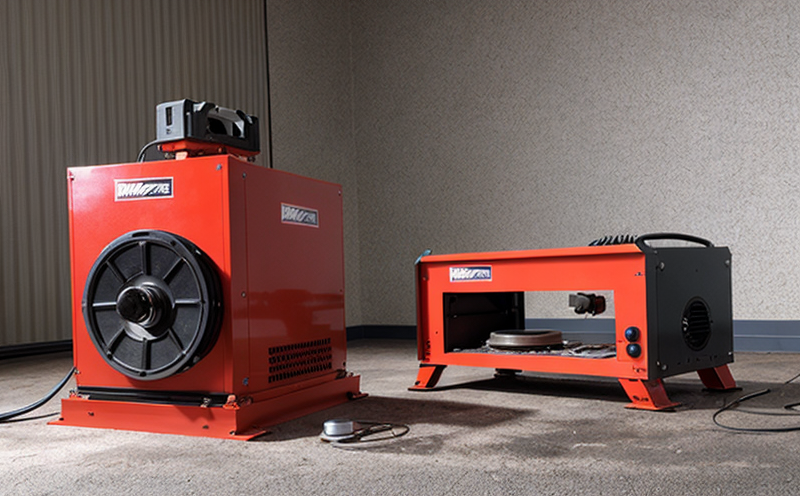ISO 2247 Package Vibration Testing
The ISO 2247 package vibration testing service ensures that packages are subjected to simulated real-world transportation conditions, focusing on the effects of shock and impact forces. This procedure is crucial for industries dealing with fragile goods or those subject to harsh environmental conditions during shipment. The test aims to evaluate how well a product’s packaging withstands the rigors of transport by simulating various modes of transportation such as road, rail, air, and sea.
The primary objective is to ensure that the packaging maintains its integrity throughout the supply chain, thereby protecting the contents from damage due to vibration, shock, and impact. The test involves placing a sample package on an instrumented shaker table which replicates the vibrations experienced during transit. This process helps manufacturers design packages that are more robust and reliable.
Understanding the ISO 2247 standard is essential for compliance with international regulations governing product transportation. Compliance ensures that your products can pass through customs smoothly, avoiding costly delays or rejections. The test is particularly important for industries like pharmaceuticals, electronics, and luxury goods where package integrity directly impacts consumer satisfaction.
The testing procedure closely follows ISO 2247 guidelines, which specify the vibration characteristics of various transportation modes. By adhering to these standards, laboratories can provide accurate results that reflect real-world scenarios. This ensures that your products are not only compliant but also perform optimally under diverse conditions.
Real-world applications of this service extend beyond mere compliance; it is a key component in product development and quality assurance. Engineers use ISO 2247 testing to identify potential weaknesses in packaging design early in the process, allowing for iterative improvements before mass production. This approach not only enhances product safety but also reduces costs associated with field failures.
During testing, packages are subjected to a range of vibration frequencies and amplitudes that mimic typical transport conditions. The test setup includes an shaker table equipped with multiple channels capable of generating complex multi-axis vibrations. Specimens are securely mounted on the shaker table, ensuring they experience realistic motion patterns.
The data collected during testing is crucial for interpreting results accurately. Key parameters include peak acceleration, duration, and frequency content. Post-test analysis involves comparing actual measurements against predefined acceptance criteria specified in ISO 2247. Compliance with these limits indicates that the packaging has successfully passed the test.
| Transport Mode | Vibration Characteristics |
|---|---|
| Road | High-frequency, low-amplitude vibrations |
| Rail | Low-frequency, high-amplitude oscillations |
| Air | Moderate frequency and amplitude variations |
| Sea | Varying intensity over long periods |
The ISO 2247 package vibration testing service is an indispensable tool for ensuring product safety and compliance. It plays a vital role in safeguarding fragile goods during transportation, thereby enhancing overall supply chain efficiency.
Applied Standards
In addition to the primary standard ISO 2247, other relevant international standards such as ASTM D3809 and EN 1652 also provide guidance on package testing. These standards complement each other, offering a comprehensive framework for evaluating packaging performance across different environments.
- ISO 2247: Specifies the vibration characteristics of various transportation modes.
- ASTM D3809: Provides methods for determining the resistance to mechanical impact and penetration by sharp objects.
- EN 1652: Offers guidance on the design, manufacture, and testing of packaging intended for use in road transport.
By adhering to these standards, laboratories can ensure that their testing procedures are aligned with global best practices. This alignment not only facilitates international trade but also enhances the credibility of test results.
Scope and Methodology
The scope of ISO 2247 package vibration testing encompasses a wide range of applications, from consumer electronics to pharmaceuticals. The methodology involves subjecting packages to simulated transportation conditions using an instrumented shaker table.
| Transport Mode | Vibration Parameters |
|---|---|
| Road | Frequency: 10 Hz to 50 Hz, Amplitude: 20 g peak-to-peak |
| Rail | Frequency: 3 Hz to 40 Hz, Amplitude: 60 g peak-to-peak |
| Air | Frequency: 5 Hz to 150 Hz, Amplitude: 20 g peak-to-peak |
| Sea | Frequency: 0.5 Hz to 30 Hz, Amplitude: Variable over time |
The testing process begins with specimen preparation, ensuring that the package is representative of real-world conditions. The shaker table then generates vibrations according to specified parameters for each transport mode. Post-test analysis involves measuring peak accelerations and comparing them against acceptance criteria.
Compliance with ISO 2247 ensures that packages are robust enough to withstand transportation challenges, thereby protecting the contents from damage. This approach not only enhances product safety but also contributes to environmental sustainability by minimizing waste associated with failed shipments.
Quality and Reliability Assurance
The quality of ISO 2247 package vibration testing is assured through rigorous calibration and validation processes. Each shaker table is regularly calibrated using reference standards, ensuring accurate generation of specified vibrations. This precision minimizes errors and provides reliable test results.
- Calibration: Regularly performed using reference accelerometers.
- Data Collection: Continuous monitoring ensures accurate recording of all parameters.
- Analytical Tools: Advanced software packages are used to analyze and interpret data effectively.
- Reporting: Comprehensive reports provide detailed insights into test results and compliance status.
The reliability of the testing process is further enhanced by adherence to strict quality control measures. These include regular calibration, maintenance of equipment, and ongoing training for laboratory personnel. This commitment to excellence ensures that ISO 2247 package vibration testing remains a trusted service within the industry.





